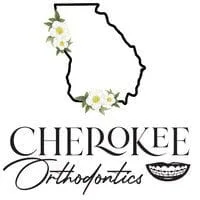From braces to tooth removal, A. Stuart Loos, DDS is equipped to handle all your orthodontic needs. To help you understand your options, we've included descriptions of some of our leading services on this page.
- Orthodontic Treatment for Adults
- Orthodontic Treatment for Children
- Orthodontic Treatment for Adolescents
- Invisalign
- Speed Self-Ligating Braces
Early Treatment
When is the best time to begin orthodontics?
The American Association of Orthodontists recommends that the initial orthodontic evaluation should occur at the first sign of orthodontic problems or no later than age 7. At this early age orthodontic treatment may not be necessary, but vigilant examination can anticipate the most advantageous time to begin treatment.
What are the benefits of early orthodontic evaluation?
Early evaluation provides both timely detection of problems and greater opportunity for more effective treatment. Prudent intervention guides growth and development which can prevent serious problems later. When orthodontic intervention is not necessary, an orthodontist can carefully monitor growth and development and begin treatment when it is ideal.
Why is age 7 considered the optimal time for screening?
By the age of 7 the first adult molars erupt establishing the back bite. During this time an orthodontist can evaluate front-to-back and side-to-side tooth relationships. For example, the position of erupting incisors can indicate possible overbite, open bite, crowding or gummy smiles.
What are the advantages of interceptive (Phase I) treatment?
Interceptive treatment aids in several areas including; Creating room for crowded and erupting teeth and creating facial symmetry by influencing jaw growth. It can also reduce the risk of trauma to protruding front teeth by moving them to a more ideal position. In some cases, interceptive treatment is required to preserve space for un-erupted teeth if baby teeth are lost too early. It can also reduce the need for future tooth removal and total treatment time with braces.
Adult Treatment
Advanced techniques make it easy to achieve a beautiful smile at any age.
Braces aren't just for kids anymore. Tooth alignment can be changed at any age if your gums and bone structure are healthy. We offer a variety of treatments that are designed for different age groups  including adults. A new smile can begin today.
Orthodontic treatment at later stages in life can dramatically improve your personal appearance and
self-esteem. Improving the health of your teeth and gums is equally important. Crooked teeth and a bad bite can contribute to gum and bone loss, tooth decay, abnormal wear of the tooth enamel and surfaces, headaches and jaw joint (TMJ/TMD) pain.
Good news! The new techniques and appliances we use greatly reduce discomfort levels, decrease the frequency of visits, shorten treatment time and may allow you to choose from several options. Your
options may include metal braces, translucent braces or transparent aligners that can be worn at night to improve mild cases of misaligned teeth.
Are you a candidate for orthodontic treatment?
Orthodontics is not merely for improving the aesthetics of the smile; orthodontic treatment improves bad bites (malocclusions). Malocclusions occur as a result of tooth or jaw misalignment. They can also affect the way you smile, chew, clean your teeth or feel about your smile. The main goal of orthodontic treatment is to gently correct these malocclusions, leaving you with a beautiful smile for the rest of your life.
Why should malocclusions be treated?
According to studies by the American Association of Orthodontists, untreated malocclusions can result in a variety of problems:
Crowded teeth are more difficult to properly brush and floss, which may contribute to tooth decay and/or gum disease.
Protruding teeth are more susceptible to accidental chipping. Cross bites can result in unfavorable growth and uneven tooth wear. Open bites can result in tongue-thrusting habits and speech impediments.
Ultimately, orthodontics does more than make a pretty smile- it creates a healthier you.
Initial Oral Examination
Your initial oral examination is complimentary. It will include a visual examination, charting, and diagnosis and treatment recommendations for whatever concerns you have.
What is Orthodontics
Irregularities with your mouth and teeth, as well as certain abnormalities or irregularities with your facial features, are typically treated by specialists in orthodontic dentistry. Read more...
All about Braces
Braces are usually custom-made and are prescribed and designed by the orthodontist according to the problem being treated. Other orthopedic appliances are designed to correct jaw-growth problems. Read more...
Orthodontic Treatment for Adults
While their teeth and jaws are not as easily manipulated as children’s, adults derive tremendous benefits from orthodontic treatment.
Common problems with adults that may be corrected by orthodontia include tooth loss and degradation of the structures (jaw bones) that support the teeth. Read more...
Orthodontic Treatment for Children
Orthodontic appliances can do wonders as your child develops. For example, an appliance may stave off problems with an upper or lower jaw that isn't growing at the same rate as the other, or correct problems that are creating difficulties with chewing or swallowing. Read more...
Invisalign
Invisalign's® invisible, removable, and comfortable aligners will give you the beautiful straight teeth you've always wanted. And best of all, no one can tell you're wearing them. Invisalign is great for adults and teenagers. Read more...
Orthodontic Surgery
In some cases, especially with adults, orthognathic surgery may be needed to do such things as reconstructing jaws or jawbones. Read more...
TMJ Therapy
One of the most common jaw disorders is related to a problem with the temporomandibular joint, the joint that connects your lower jaw to your skull, and allows your upper and lower jaw to open and close and facilitates chewing and speaking. Read more...
Orthodontic Appliances
Advances in technology have vastly improved appearance issues with orthodontia.


 Call For Pricing!
Call For Pricing!